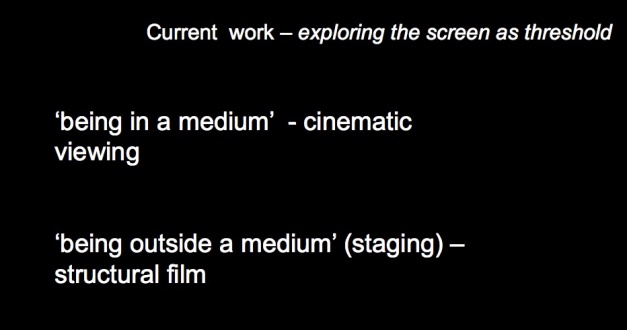I started to think about loops as a kind of temporal default for video installation and realised that this kind of unanchored immersive view of time might be a problem ie not in keeping with spatial threshold because the experience of space and time cannot be separated . Being in and out of time is a threshold condition.
So I wanted to structure the work in time in a way that was also spatially congruent.
One solution is to divide the work into elements ( call them chapters) spaced apart by interludes.
Each interlude corresponds to a spatial experience in which one is aware of the screens, not as projected images but part of the space of the work. It is a time for being in the space of the screens as say architectural elements.
The Chapters contain the work itself, in which the screens function more conventionally as carriers for the projected moving images.
In this way the work moves forward both temporally and spatially, the visitor moving between spaces, in and out of interludes and chapters.





